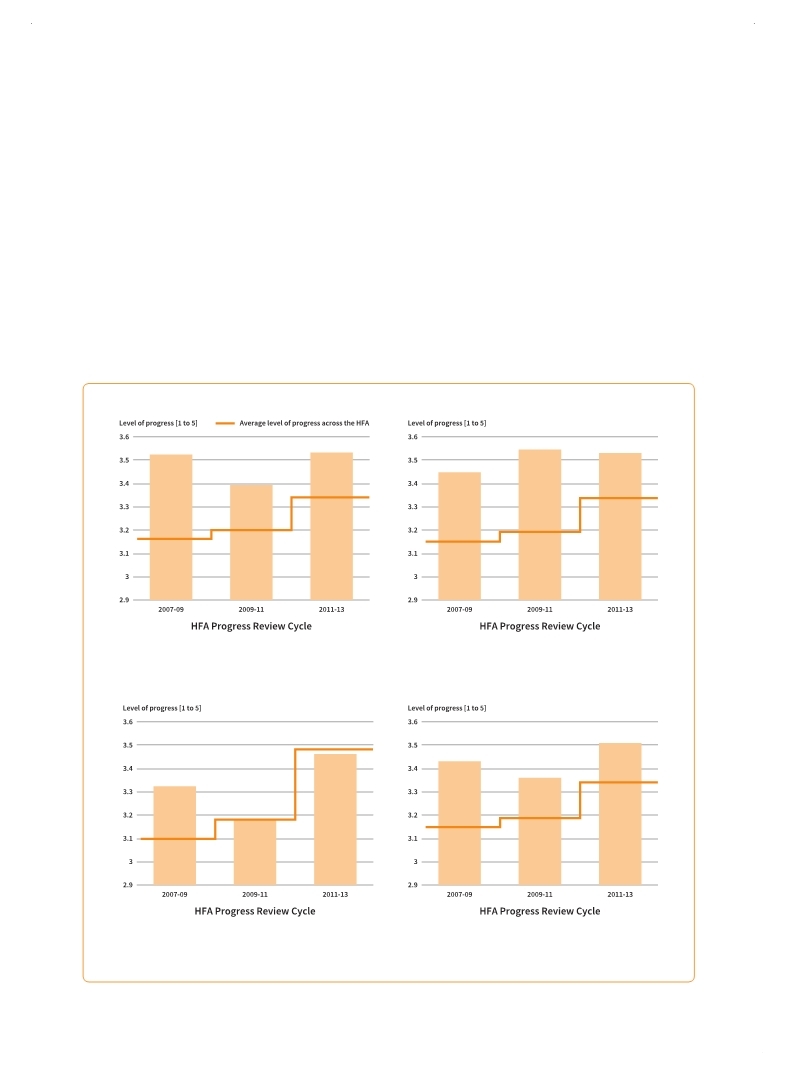 |
Global Assessment Report on Disaster Risk Reduction 2015
Making development sustainable: The future of disaster risk management |
 |
Global Assessment Report on Disaster Risk Reduction 2015
Making development sustainable: The future of disaster risk management |
|
|

162
Part II - Chapter 8
and community levels, and at schools and colleges (
 SCI, 2014 SCI, 2014 SCI (Save the Children International). 2014,The cultural dimension of Disaster Risk Reduction, Background Paper prepared for the 2015 Global Assessment Report on Disaster Risk Reduction. Geneva, Switzerland: UNISDR.. SCI (Save the Children International). 2014,The cultural dimension of Disaster Risk Reduction, Background Paper prepared for the 2015 Global Assessment Report on Disaster Risk Reduction. Geneva, Switzerland: UNISDR.. Click here to view this GAR paper. Community-based disaster risk management (CBDRM) programmes have also provided a critical vehicle for strengthening preparedness. Most CBDRM programmes usually have a strong component of raising local awareness of risks (Shaw, 2013
Shaw, Rajib, ed. 2013,Community-Based Disaster Risk Reduction, Community, Environment and Disaster Risk Management Series, Volume 10. Emerald Group Publishing Limited.. . Maskrey, Andrew. 1989,Disaster Mitigation: A Community-Based Approach, Development Guidelines No. 3. Oxfam.. . to address the underlying risk drivers (
 SCI, 2014 SCI, 2014 SCI (Save the Children International). 2014,The cultural dimension of Disaster Risk Reduction, Background Paper prepared for the 2015 Global Assessment Report on Disaster Risk Reduction. Geneva, Switzerland: UNISDR.. SCI (Save the Children International). 2014,The cultural dimension of Disaster Risk Reduction, Background Paper prepared for the 2015 Global Assessment Report on Disaster Risk Reduction. Geneva, Switzerland: UNISDR.. Click here to view this GAR paper. The preparedness imperative
A number of factors may explain the progress made in disaster preparedness. Unlike other investments in disaster risk reduction, effective response is politically visible and therefore enjoys
Figure 8.2 Progress reported against core indicators in HFA Priority for Action 5
HFA Core Indicator 5.1: Strong policy, technical and institutional capacities and mechanisms for DRM, with a DRR perspective.
HFA Core Indicator 5.2: Disaster preparedness plans and contingency plans at all administrative levels, regular training drills and rehearsals.
HFA Core Indicator 5.3: Financial reserves and contingency mechanisms in place for response and recovery.
HFA Core Indicator 5.4: Procedures in place for effective information sharing during and after disasters.
(Source: UNISDR with data from the HFA Monitor.)
|
 
Page 1Page 10Page 20Page 30Page 40Page 50Page 60Page 70Page 80Page 90Page 100Page 110Page 120Page 130Page 140Page 150Page 152Page 153Page 154Page 155Page 156Page 157Page 158Page 159Page 160Page 161Page 162Page 163->Page 164Page 165Page 166Page 167Page 168Page 169Page 170Page 171Page 172Page 173Page 174Page 175Page 176Page 180Page 190Page 200Page 210Page 220Page 230Page 240Page 250Page 260Page 270Page 280Page 290Page 300Page 310
|
|
 
|
 
|
